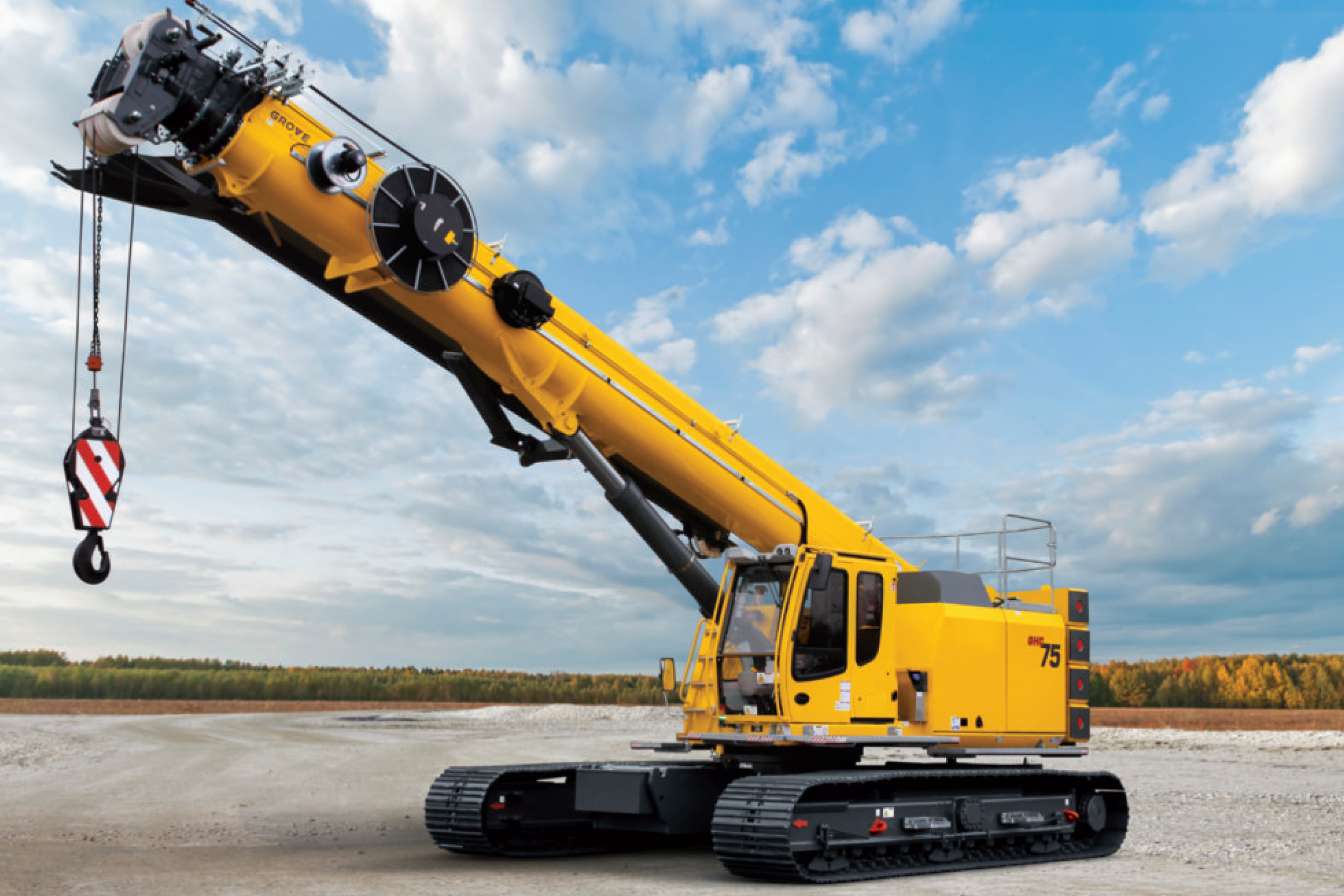The Importance of Construction Equipment Safety
The construction industry is a vital component of global infrastructure development, but it also poses significant safety challenges due to the operation of heavy machinery and equipment. Ensuring construction equipment safety is paramount to protect the well-being of workers, minimize accidents, and enhance the efficiency and quality of construction projects. In this blog, we will delve into the world of construction equipment safety, its critical importance, and the best practices for maintaining a secure work environment.
The Significance of Construction Equipment Safety
Construction sites are dynamic environments where numerous tasks are carried out simultaneously. The presence of heavy machinery, equipment, and high-risk activities makes construction sites susceptible to accidents and injuries. Here’s why construction equipment safety is of utmost importance:
Worker Well-Being: The primary concern is the safety and well-being of construction workers. Construction equipment accidents can lead to severe injuries or even fatalities.
Efficiency and Productivity: Ensuring safety reduces downtime due to accidents, which can impact project timelines and costs. A safe work environment promotes efficiency and productivity.
Compliance with Regulations: Legal and regulatory requirements mandate the implementation of safety measures in construction sites. Non-compliance can lead to penalties and legal liabilities.
Reputation and Public Perception: Companies with a strong safety record are more likely to win contracts and maintain a positive reputation. Public perception of a company’s safety practices can affect its brand and business.
Cost Savings: Preventing accidents and injuries through safety measures reduces medical costs, workers’ compensation claims, and insurance premiums.
Key Components of Construction Equipment Safety
To establish a culture of safety on construction sites, it’s essential to consider various components of construction equipment safety:
Training and Education: Workers must be adequately trained to operate construction equipment. Regular safety training and educational programs help maintain awareness and competence.
Equipment Inspection: Routine inspections of construction equipment are essential to identify any mechanical issues or faults that could lead to accidents. Equipment should be well-maintained and repaired promptly when needed.
Safety Protocols: Every construction site should have well-defined safety protocols in place. These protocols include guidelines for the safe operation of equipment, the use of personal protective equipment (PPE), and emergency procedures.
Safety Equipment: PPE, including hard hats, safety vests, gloves, and eye protection, is mandatory for construction workers. Adequate safety equipment should be provided and worn at all times.
Communication: Clear and effective communication is crucial on construction sites. Workers must be able to communicate with equipment operators and fellow workers to avoid accidents.
Site Management: An organized and well-managed construction site minimizes the risk of accidents. Site managers should enforce safety policies and maintain order on the premises.
Common Hazards in Construction Equipment Operation
Construction equipment operators face various hazards during their work. Understanding these risks is essential for preventing accidents and ensuring construction equipment safety:
Overhead Hazards: Falling objects and debris pose a significant risk to workers and equipment operators. Proper storage and securement of materials can reduce this hazard.
Trench and Excavation Hazards: Workers involved in excavation work face the risk of cave-ins. Proper shoring, sloping, and shielding of trenches are essential for safety.
Struck-by Accidents: Workers can be struck by moving equipment or equipment parts. Establishing clear zones and ensuring workers maintain safe distances from operating equipment can prevent struck-by accidents.
Caught-in/Between Hazards: Workers can become trapped or caught in heavy machinery or equipment. Proper lockout/tagout procedures and confined space safety measures are critical.
Electrical Hazards: Construction sites often involve the use of electrical equipment. Proper grounding, insulation, and safety protocols are essential for electrical safety.
Construction Equipment Safety Best Practices
Implementing the following best practices can significantly enhance construction equipment safety on your worksite:
Training and Certification: Ensure that equipment operators receive proper training and certification. Regular refresher courses and safety updates are also essential.
Preventive Maintenance: Regularly inspect and maintain construction equipment to identify and address potential issues before they become safety hazards.
Safety Protocols: Develop and enforce comprehensive safety protocols that address potential risks and provide clear guidelines for equipment operation and personal safety.
Risk Assessment: Conduct thorough risk assessments for each task and construction phase. Identify potential hazards and develop strategies to mitigate them.
Site Organization: Maintain a well-organized and clean worksite to reduce the risk of trips, falls, and accidents. Provide clear signage and designated pathways for pedestrians.
Emergency Preparedness: Develop and communicate emergency procedures for accidents, fires, and medical incidents. Ensure that all workers know how to respond in case of an emergency.
Technology and Construction Equipment Safety
Technology plays an essential role in enhancing construction equipment safety. Several innovations are transforming the industry and reducing risks:
Telematics: Telematics systems provide real-time data on equipment location, operation, and maintenance needs. They help identify unsafe behaviors and enforce safety protocols.
Collision Avoidance Systems: These systems use sensors and cameras to detect obstacles and warn equipment operators of potential collisions, preventing accidents.
Wearable Technology: Smart helmets and vests equipped with sensors provide operators with real-time data on their health and safety conditions. They can alert workers to dangers and track their movements on the site.
Drones: Drones are used for site inspections, monitoring, and data collection. They can identify potential safety hazards and provide a bird’s-eye view of the site.
Remote Operation: Remote-controlled equipment reduces the need for workers to be in close proximity to operating machinery, improving safety in hazardous areas.
Machine Learning and AI: Machine learning algorithms can analyze data to predict potential equipment failures, helping prevent accidents caused by equipment malfunctions.
Case Study: Technology’s Impact on Construction Equipment Safety
ABC Construction, a mid-sized construction company, implemented a range of technological solutions to enhance construction equipment safety:
Telematics: ABC Construction introduced telematics in its fleet of heavy machinery, allowing real-time monitoring of equipment usage and maintenance needs. This helped prevent unexpected breakdowns and accidents.
Wearable Technology: Operators were equipped with smart helmets that monitored their vitals and safety conditions. In case of health issues or an unsafe environment, the system would alert both the operator and the site manager.
Drones: ABC Construction used drones to conduct regular site inspections. These drones identified potential hazards, such as loose scaffolding, and allowed for timely corrective action.
Machine Learning: By implementing machine learning algorithms, ABC Construction was able to predict equipment failures before they occurred. This prevented accidents and improved overall site safety.
As a result of these technological advancements, ABC Construction saw a significant reduction in accidents and injuries on their worksites. The company’s safety record improved, leading to better project timelines, cost savings, and an enhanced reputation in the industry.
Construction equipment safety is an integral part of the construction industry, and it directly impacts the well-being of workers, project efficiency, and the reputation of construction companies. Implementing robust safety measures, offering training and certification programs, and utilizing technology to enhance safety practices are essential steps for creating a secure work environment. By prioritizing safety, construction companies can minimize accidents, reduce costs, and ultimately contribute to a safer and more productive industry.


